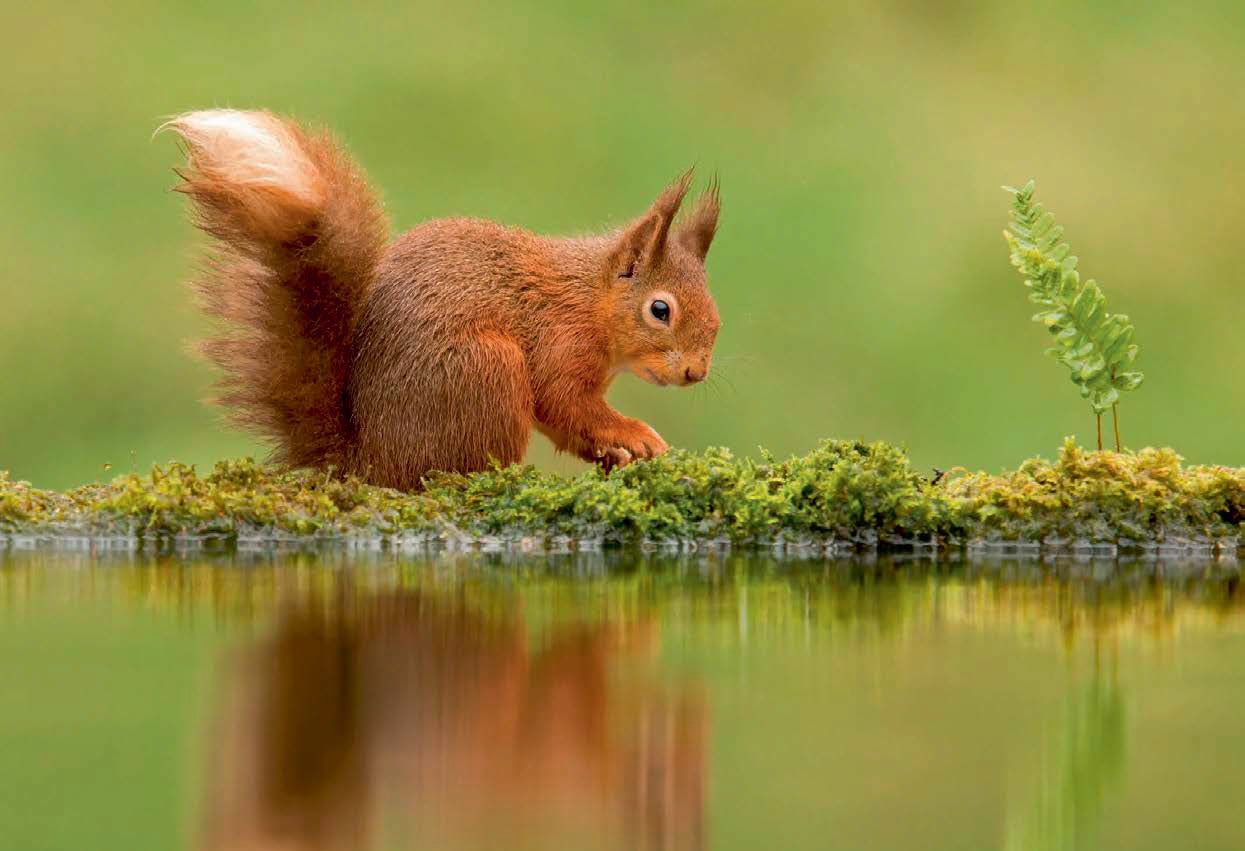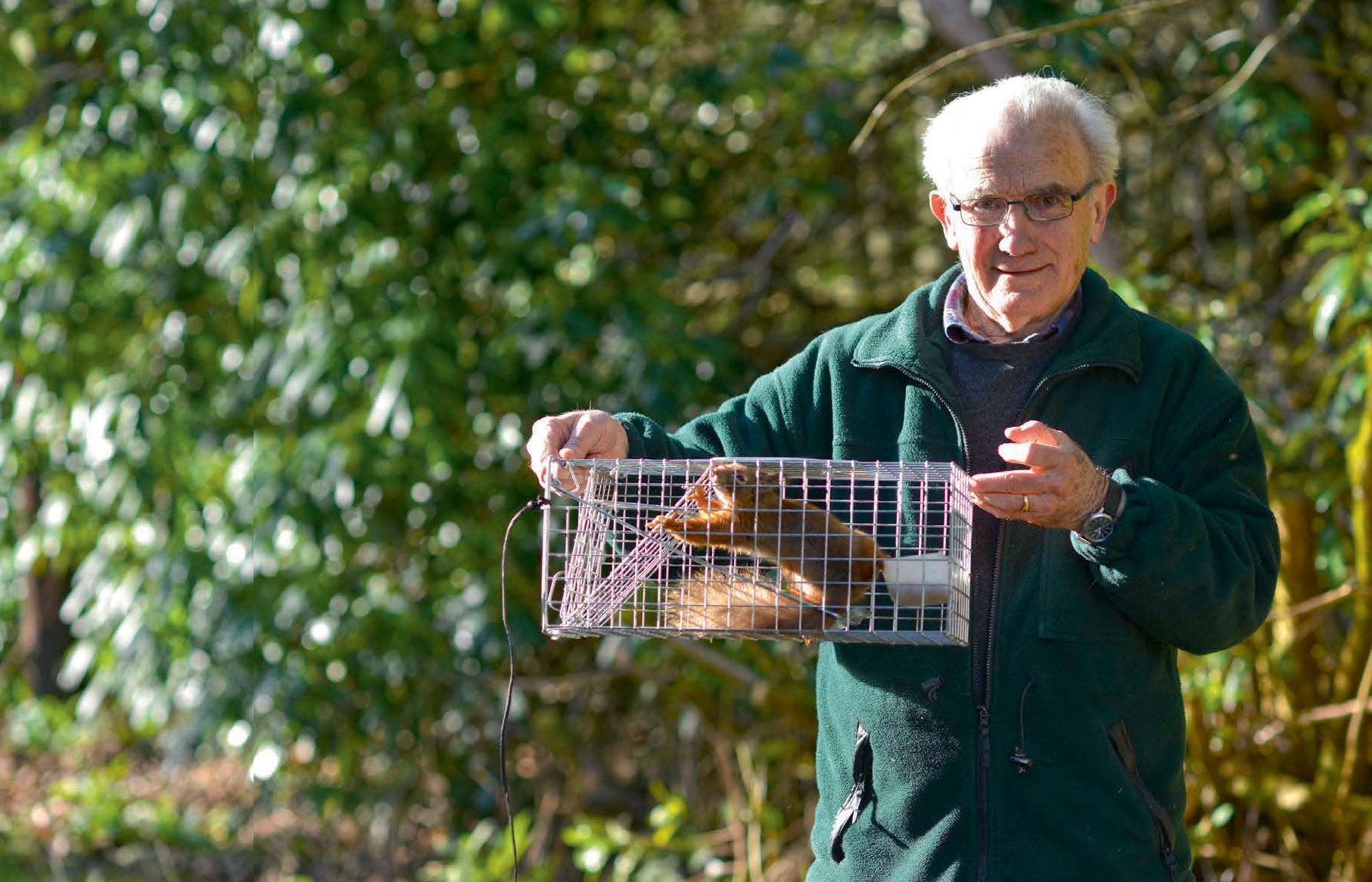Relocating endangered squirrels offers a road to recovery.
Safeguarding red squirrels in Scotland may be an ongoing concern, but the pioneering work of one man is offering hope for the future of this threatened species.
Ornithologist and wildlife consultant Roy Dennis MBE has an impressive track record. His name is frequently linked with ospreys, a lifelong interest that began when he took up a post as RSPB warden at Loch Garten in 1959.
Ospreys had become extinct as breeding birds by the early 20th century. However, a pair set up a nest by Loch Garten in 1954, going on to successfully rear young, beginning a slow and arduous recovery for the species. Help came in the form of the society’s late George Waterston, who established a public viewing hide at the loch which dramatically altered the public attitude towards wildlife.
In the first season, 14,000 visitors saw the breeding birds; by 2001, visitor numbers to RSPB Loch Garten had reached two million.
Allowing the birds to be viewed caught the public’s attention, while the dedication of wardens such as Roy to educate and make us aware of threats to the birds’ survival mean there are now some 200 breeding pairs in Scotland.
The osprey’s recovery remains one of the most successful British conservation stories of all time.
A passionate advocate for the reintroduction of lost species, in particular beaver and lynx, Roy has been involved with the return of the white-tailed sea eagle and the red kite, as well as golden eagles to Ireland.
His pioneering satellite tracking work during the past 15 years has provided valuable scientific data and has resulted in hugely popular web access that enables people to follow the fortunes of migrating raptors, keeping the public both informed of and involved in wildlife conservation.
In 1995, Roy set up the Highland Foundation for Wildlife – a non-membership charity dedicated to conservation and research, with a focus on species recovery and habitat restoration.
Based near Forres, he spends his time lecturing, writing and overseeing wildlife projects in the UK and abroad. His latest success story is his red squirrel translocation work.

Red squirrels are flourishing in the north and west
In 2005, Jane Rice, the owner of Dundonnell Estate in Wester Ross, contacted Roy about the possibility of bringing back red squirrels to an area she regarded as having the perfect habitat.
The last record of squirrels in the area was from the 1970s, but as a result of a loss of habitat they had died out.
‘Many woods had been felled and replanted, and though young forestry is good for mammals such as pine martens, it is no use for red squirrels until it reaches about 20 years old,’ Jane explains. ‘It’s vital to be sure the habitat can provide all they need and Dundonnell’s woodland seemed once again suitable for squirrels. I began to look into moving some from areas such as Moray and Strathspey where they were thriving; and, following communications with Scottish Natural Heritage, I was given a licence to trap squirrels in places where they were coming to garden feeders.’
It’s a laborious process as the squirrels have to come from different areas to avoid close genetics and every trapped squirrel has to be taken to the Strathspey Veterinary Centre at Grantown-on-Spey, where vet Jane Harley weighs and measures them, checks them for parasites, takes blood samples and fits microchips.
‘It’s unfortunate that we have to do this as it would save a great deal of time if they could be taken straight to release sites,’ Jane says. ‘It’s pretty obvious from their appearance that the animals are fit and well. However, these are the rules and as soon as they are deemed fit – which all have proved to be – they are put into individual nest boxes lined with hay and containing nuts and sweet apple (the latter to help them avoid dehydration on the journey) and taken to their release location.’
In early 2009, the first squirrels made the two-hour journey to Dundonnell. ‘On arrival, the boxes are quickly fitted to the trees above nut feeders and the doors taken off. We plug the entrances with dried grasses or moss so they remain shut for a while and then the squirrels can push them open later, once we have gone.
‘Initially it was suggested that the squirrels should be put into a pen for a soft release, but this doesn’t work,’ says Jane. ‘Two squirrels may not get on with one another and being in a pen is stressful as they have to remain in close proximity. Out of 43 caught that winter, we lost only one and that was in a soft-release situation. It is preferable to put them straight out,’ she adds.
Dundonnell keeper Alasdair MacDonald was a vital part of the project and kept detailed records. He also regularly topped up feeders; during the first year he got through 18 sacks of peanuts, 12 of sunflower seeds and six of maize.
The first pregnant squirrels were seen in May 2009 and by that winter 26 dreys were located and 11 squirrels counted in just three hours.

Roy Dennis with a captured red squirrel
Keeping tabs on numbers is tricky. ‘Four were fitted with satellite tags; two of the females had two litters each that season. Like many young males, one had the wanderlust and crossed the mountains to Loch Broom. He remained in one big garden and in March a female was released there and they bred. It’s the first time I have played matchmaker to squirrels,’ Jane says.
In 2012, once it was clear the population at Dundonnell was flourishing, twenty squirrels were caught and moved to Loch Broom. ‘Now there are red squirrels over a large tract of land between the gardens of Ullapool and Braemore Junction, and at Dundonnell. It’s an excellent result,’ Jane says.
Similarly, at Alladale and Amat, 36 squirrels were taken from Moray and Strathspey in early 2013. They too are thriving and bred in their first summer. When Roy checked on one of his visits in November 2015, he counted 11 in one garden, and it was reported that some had spread 10km along Strathcarron. A local farmer also witnessed a squirrel swimming across the River Carron.
‘If the population is buoyant, individuals will easily cross mountains and rivers, and begin to spread out.’ Jane says. ‘In my opinion, where forestry work entails large tracts of clear fell, it would be relatively simple for Forestry Commission rangers to move squirrels in this way. We should also start releasing reds in areas where grey squirrels have been reduced; when people see them, it helps to change their attitude and would encourage them to be more proactive in ridding the countryside of the grey.’
There is much still to be done. Roy has a five-year licence to continue with his squirrel project and is currently looking at fifty sites in the north and west.
This valuable work relies on funding and co-operation, as well as the dedication of estate and landowners, such as Jane Rice, who now bear witness to its success.
For more details on the Highland Foundation for Wildlife visit www.roydennis.org
(This feature was originally published in 2016)
TAGS

